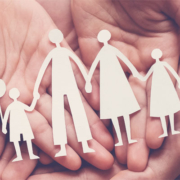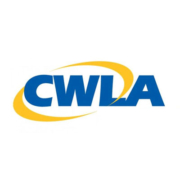Supporting LGBTQ+ Children and Families Engaging the Child Welfare System

Supporting and building an inclusive experience for youth and families who engage the child welfare system is essential. Child welfare agencies, systems, and cultures should become informed and remain sensitive to the specific needs of LGBTQ+[1] children and their families. The child welfare system is not always the most LGBTQ+ friendly environment. In fact, many times, it can be quite intimidating. This is often because the system was designed with heteronormative families in mind, so LGBTQ+ families can feel like they don’t quite fit in. This can be extremely difficult for youth who are already struggling with their identity and may not have the support of their family or community.
A few things can be done to make the child welfare system more inclusive for LGBTQ+ youth and families. First, practitioners must be trained in cultural competence, which includes understanding the unique needs of LGBTQ+ persons. They should also be aware of the potential bias against LGBTQ+ families and work to ensure that all families are treated fairly and respectfully. In addition, child welfare agencies should make an effort to identify and recruit LGBTQ+ foster and adoptive families. This can help create a more supportive environment for LGBTQ+ youth in foster care.
It’s also essential for child welfare professionals to be authentic allies for LGBTQ+ youth and families. This means supporting, affirming, and providing resources and referrals when needed. It can be challenging for LGBTQ+ youth and families to navigate the child welfare system, but with the right support, they can thrive.
LGBTQ+ children and families face unique challenges when engaging with the child welfare system. Here are some ways social workers and other practitioner-level staff can be supportive:
Be informed and sensitive to the specific needs of LGBTQ+ youth and their families.
As children and families who identify as LGBTQ+ continue to face discrimination and, oftentimes, violence, it is important for those who work in the child welfare system to be informed and sensitive to the unique challenges that they may face. First, having a well-trained staff on issues related to the LGBTQ+ community should be a priority for leadership, management, and staff. It is also essential to use inclusive language when speaking with LGBTQ+ youth and families and avoid making assumptions about their identities or experiences. By creating a safe and welcoming environment, child welfare professionals can help LGBTQ+ youth feel supported and affirmed, thus creating the best condition to get them the services they need.
Understand the unique challenges LGBTQ+ youth and families face when dealing with the child welfare system.
LGBTQ+ youth and families often face unique challenges when interacting with the child welfare system. Child welfare professionals must be aware of these challenges to provide the best possible service to this population. Some challenges LGBTQ+ youth and families may face include discrimination, lack of understanding or acceptance, and feeling ostracized or alone. Child welfare professionals must be prepared to address these challenges in a sensitive and culturally competent manner. Doing so will better meet the needs of LGBTQ+ youth and families and help them navigate the child welfare system successfully.
Be an advocate and provide resources for LGBTQ+ youth and families within the child welfare system.
Child welfare professionals can be an advocate for LGBTQ+ youth and families within the child welfare system by providing support, understanding, and acceptance. They can also help connect these families with resources and services that are inclusive and affirming of their identity. By being an ally to LGBTQ+ youth and families, child welfare professionals can help create a more inclusive and welcoming environment for all.
When working with LGBTQ+ youth and families engaged with the child welfare system, social workers can make referrals and share resources that may help them. Sharing resources can help them navigate the system and advocate for their rights. These resources might include books, articles, websites, or other materials that provide information on the unique challenges faced by LGBTQ+ people in the child welfare system. There are also organizations that offer support for LGBTQ+ youth and families, including the Family Equality, Gay, Lesbian & Straight Education Network (GLSEN), and the Human Rights Campaign Foundation. These organizations can provide information on resources available to LGBTQ+ youth and families, as well as support and advocacy.
The following resources on how to better support LGBTQ+ youth and families have been provided by the Children’s Bureau (Center for States and Child Welfare Information Gateway):
- Toolkit to Support Child Welfare Agencies in Serving LGBTQ Children, Youth, and Families (Center for States)
- Creating LGBTQ Affirming Agencies Video and Guide (Center for States)
- “Supporting and Affirming LGBTQ Children and Youth” (Center for States)
- Affirming and Supporting LGBTQ Children and Youth in Child Welfare (Center for States)
- Considerations for LGBTQ Children and Youth in Foster Care: Exploring Normalcy as It Relates to P.L. 113–183 (Center for States)
- Working With LGBTQ+ Youth and Families (Child Welfare Information Gateway)
- National SOGIE Center (University of Maryland)
The child welfare system can be a complex and intimidating environment for LGBTQ+ children and families. However, we must continue supporting and building an inclusive experience for all youth and families who engage in the child welfare system. By remaining informed and sensitive to the specific needs of LGBTQ+ children and families, we can make the child welfare system a more welcoming and supportive environment for all.
Contributing Author:
Jeff Lukich is a Senior Director and Child Welfare Strategy and Practice Lead at DLH Corporation. Previously, he served 30 years with the Georgia Division of Family and Children Services overseeing all programs for the organization, including child welfare. He retired in 2018 as the Division’s Chief of Staff.
[1] There are numerous ways to characterize the LGBTQ community. There is no one-size-fits-all approach for referring to or defining LGTBQ+ individuals and communities. You should utilize the preferred phrasing of the individual or people you’re communicating with.













Leave a Reply
Want to join the discussion?Feel free to contribute!